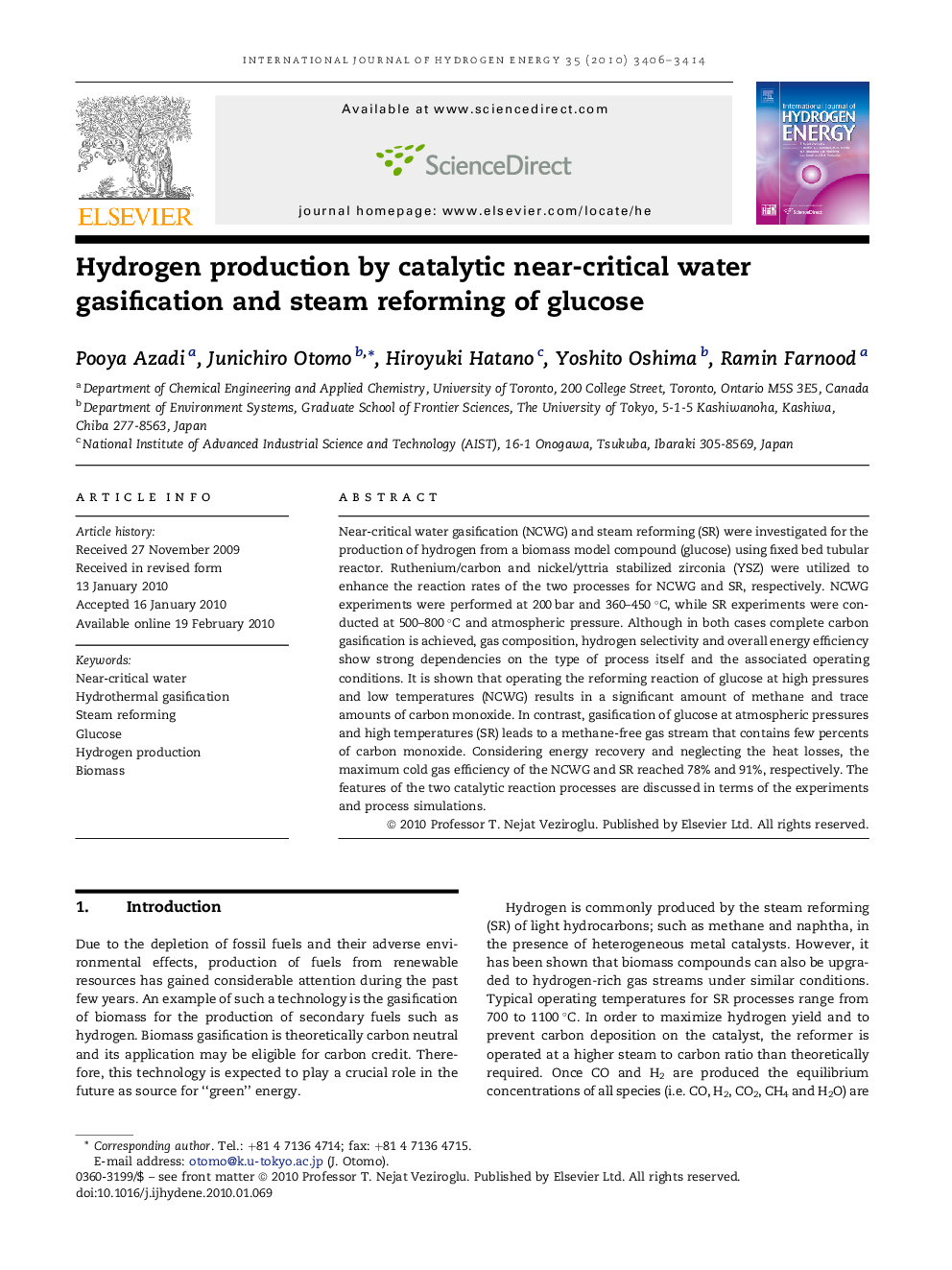| Article ID | Journal | Published Year | Pages | File Type |
|---|---|---|---|---|
| 1282895 | International Journal of Hydrogen Energy | 2010 | 9 Pages |
Near-critical water gasification (NCWG) and steam reforming (SR) were investigated for the production of hydrogen from a biomass model compound (glucose) using fixed bed tubular reactor. Ruthenium/carbon and nickel/yttria stabilized zirconia (YSZ) were utilized to enhance the reaction rates of the two processes for NCWG and SR, respectively. NCWG experiments were performed at 200 bar and 360–450 °C, while SR experiments were conducted at 500–800 °C and atmospheric pressure. Although in both cases complete carbon gasification is achieved, gas composition, hydrogen selectivity and overall energy efficiency show strong dependencies on the type of process itself and the associated operating conditions. It is shown that operating the reforming reaction of glucose at high pressures and low temperatures (NCWG) results in a significant amount of methane and trace amounts of carbon monoxide. In contrast, gasification of glucose at atmospheric pressures and high temperatures (SR) leads to a methane-free gas stream that contains few percents of carbon monoxide. Considering energy recovery and neglecting the heat losses, the maximum cold gas efficiency of the NCWG and SR reached 78% and 91%, respectively. The features of the two catalytic reaction processes are discussed in terms of the experiments and process simulations.
